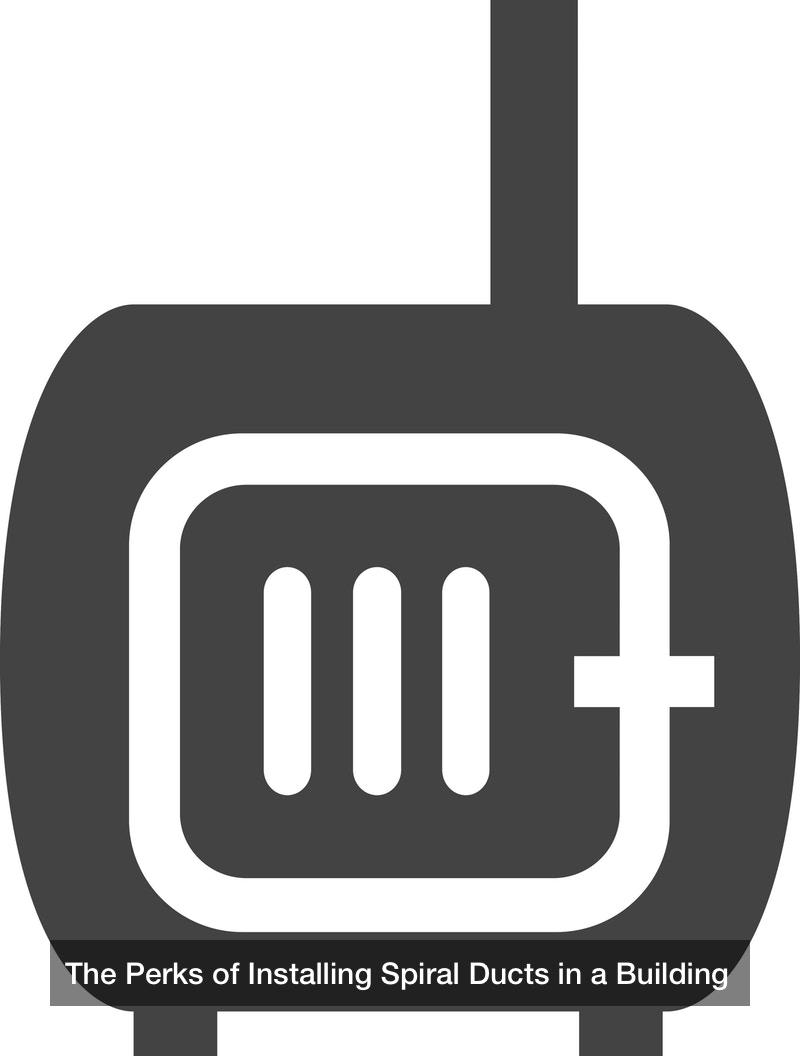
Most buildings and homes in the United States have air conditioning and heating systems in them, or HVAC, and this is known as climate control. Many different pieces of hardware are involved, from the furnace and outside air conditioner units all the way to blower fans and, of course, air ducts. Sheet metal is used to make modern air ducts, but there is more than one way to design air ducts. Traditional square ducts are still common, but for some buildings, there is not enough room to install them. Instead, oval ducts and spiral duct fittings are used, and the benefits of oval ducts are many. Using spiral duct fittings and spiral air ducts is advantageous to the manufacturers, installation crews, and the building’s owner alike. What is there to know about making and installing these spiral duct fittings?
All About Spiral Ducts
When a building is being constructed, there will only be so much room for its utilities, such as plumbing and air ducts. Square ducts are often used, but they have their limits, and they tend to rattle and make a lot of noise while they are in operation. They also require a lot of room, and some buildings will not have that room, thus excluding the use of square ducts entirely. These ducts need an extra three inches for each joint for connections and reinforcements, but spiral ducts do not face this issue at all.
Oval ducts, and spiral duct fittings, are narrower than square ducts but can deliver similar amounts of air, and in more cramped building, they are the only duct type that will fit inside anyway. These oval duct fittings are also quieter than square ones, and that makes for a more comfortable interior for the residents. And that’s not all. These oval ducts are more practical for manufacturers to make, since they don’t require as much sheet metal to produce. These oval ducts and spiral ducts also cost less to transport, store, and install, and between cost reductions of their manufacture, storage, transportation, packaging, and waste disposal, spiral ducts can make for 50% cost reductions overall.
Naturally, this makes spiral ductwork and oval ducts quite attractive to construction companies, so they can save on costs for the overall project. And of course, if the building has narrow spaces and traditional square ducts will not easily fit, spiral ducts are a clear choice for installation. The project manager can look online to find local suppliers or spiral ducts and order all the materials they need, all while enjoying cost reductions for transport, packaging, and more.
Making the Purchase
For larger construction companies, a purchasing agent will be responsible for finding and securing purchases from suppliers for all sorts of materials, and that includes spiral duct fittings and spiral duct models of all kinds. Many industries make good use of purchasing agents, and for a construction company, this agent will explore many different options to find the most reliable suppliers who can provide high quality items for a fair price. The purchasing agent will also keep in touch with carrier companies involved, to keep track of when the shipment of spiral duct fittings will arrive. That purchasing agent will also keep track of the client’s inventory, to better understand what must be purchased, and when. This avoids problems of missing supplies, or wasting money on unneeded items.
Finally, it should be noted that suppliers who provide spiral duct fittings and spiral duct models are not actually responsible for cleaning or repairing the ducts found in a building. Should oval spiral ducts get clogged with dirt or get damaged, the owner should hire local repair crews who can access this hardware and fix it. A piece of duct work that broke loose will continuously leak air until the repairs are made, and cleaning out ducts can help prevent the spread of harmful bacteria or VOCs that can cause lung issues. Very old ducts or HVAC systems, meanwhile, might be entirely removed and replaced with new ones that are more energy efficient and made with modern construction standards in mind.

